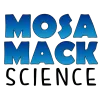Take a look inside 7 images
Mosa Mack Science
Pros: Kids see a reason to learn major science concepts because they're solving relatively realistic problems.
Cons: Some investigations could be more tightly linked to the problems presented in the initial video.
Bottom Line: A thorough, engaging way to weave some engineering into your middle school science lessons.
Middle school teachers who are looking for ways to meet the engineering standards in the Next Generation Science Standards (NGSS) will love Mosa Mack Science. Be sure to use Mosa Mack's units in a way that keeps the science content central to solving the problem at hand. This way you can help kids to see science as necessary and useful. When letting kids design their own investigations, start by placing all the materials they might want to use at a central location. It's important to give kids time to puzzle over their problem, look over the materials, and make a plan. Allow your students to share out plans with the class and build on each other's ideas.
Mosa Mack has also added variations to the lessons to include both in-person and remote/distance learning instructions and options. Plus, you can use its designations of the most teacher-led vs. the most student-centered versions of the lesson to determine how you want to approach it. If the timing of the lesson seems daunting, decide which pieces you want to use: You can show the phenomenon-based video or the animation, read one or more articles, do the experiment -- or use them all!
Mosa Mack Science features earth, physical, and life science units aimed at middle school classrooms; each unit emphasizes the NGSS Science and Engineering Practices. Students start by watching either a live-action video or a cartoon featuring the likable character Mosa Mack, Science Detective, a young woman who solves science problems. Teachers can then organize each unit around a host of provided materials: lesson plans, graphic organizers, quizzes, slideshow presentations, videos, and rubrics.
The videos -- both phenomenon-focused and animated -- introduce a problem, like the Mystery of the Ailing Fern, as well as the high-yield vocabulary necessary to create a solution. The program's Lesson 2: The Make or The Lab is a hands-on investigation where students might find themselves at stations, exploring the different states of matter. Lesson 3: The Engineer closes each unit with a design challenge where students can use the content they've learned so far.
Mosa Mack Science places scientific phenomena first in its units. Like Mystery Science and other NGSS science programs, Mosa Mack engages kids with a scientific puzzle to solve. In the second lesson (The Make or The Lab), teachers have access to plans with leveled differentiation options. Level 1 is simply a teacher demo, while level 4 has students completely design and conduct an investigation themselves, addressing the NGSS Science and Engineering Practices. A few of the inquiry investigations could seem a little bit unnecessary. For example, creating a model to see the effect that trapped heat has on temperature: Most middle school kids will get -- without the investigation -- that this makes it warmer. In Mosa Mack's third lesson (The Engineer), kids solve engaging design challenges. In one scenario, students help a pet store owner who has run out of oxygen pumps; they learn about photosynthesis before engineering a solution using the water plant Elodea. Sample solutions and detailed descriptions of needed materials support teachers throughout.
The unit and lesson plans are well-thought-out, with plenty of teacher resources. Tools provided move beyond the traditional worksheet, including digital drag-and-drop vocabulary maps. Teachers can create tests from question banks dominated by multiple-choice vocabulary questions. They can also add their own questions to the test. In an effort to mirror NGSS assessments, Mosa Mack includes some advanced options such as adding images to questions, checkbox selection, and open-ended responses. Mosa Mack is missing some of the interactive item types offered by tools like Concord Consortium, such as dragging data points to build a graph. However, with all of the resources, engaging videos, differentiation options, supports for ELLs and other needs, and a community in which to share student work, there's a ton of high-quality, thoughtful materials to work with.

















